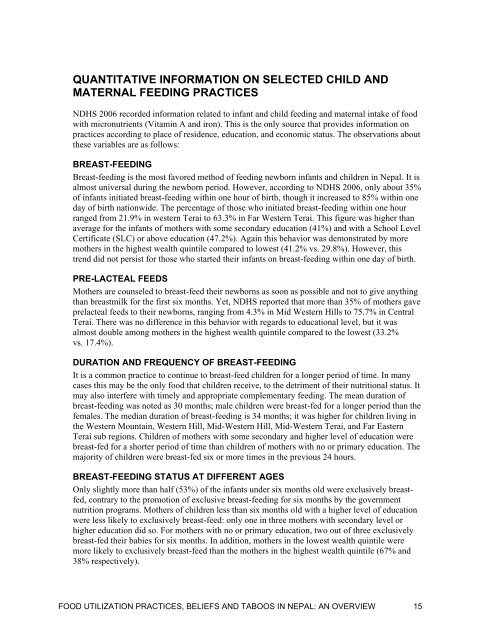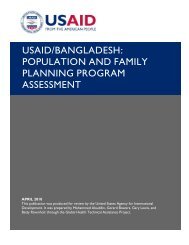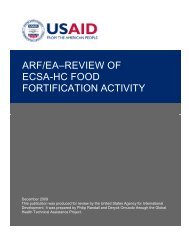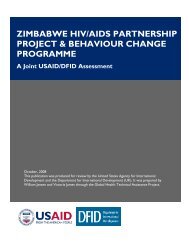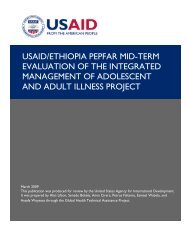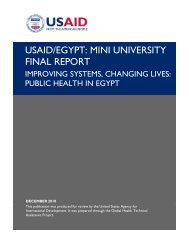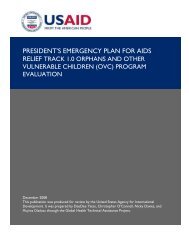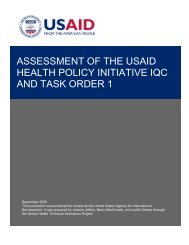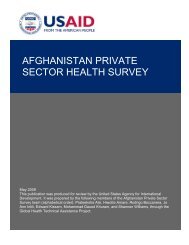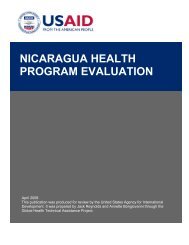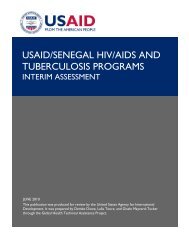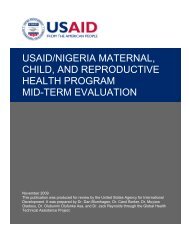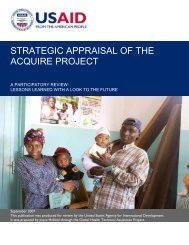Food utilization practices, beliefs and taboos in Nepal: An overview
Food utilization practices, beliefs and taboos in Nepal: An overview
Food utilization practices, beliefs and taboos in Nepal: An overview
- No tags were found...
Create successful ePaper yourself
Turn your PDF publications into a flip-book with our unique Google optimized e-Paper software.
QUANTITATIVE INFORMATION ON SELECTED CHILD ANDMATERNAL FEEDING PRACTICESNDHS 2006 recorded <strong>in</strong>formation related to <strong>in</strong>fant <strong>and</strong> child feed<strong>in</strong>g <strong>and</strong> maternal <strong>in</strong>take of foodwith micronutrients (Vitam<strong>in</strong> A <strong>and</strong> iron). This is the only source that provides <strong>in</strong>formation on<strong>practices</strong> accord<strong>in</strong>g to place of residence, education, <strong>and</strong> economic status. The observations aboutthese variables are as follows:BREAST-FEEDINGBreast-feed<strong>in</strong>g is the most favored method of feed<strong>in</strong>g newborn <strong>in</strong>fants <strong>and</strong> children <strong>in</strong> <strong>Nepal</strong>. It isalmost universal dur<strong>in</strong>g the newborn period. However, accord<strong>in</strong>g to NDHS 2006, only about 35%of <strong>in</strong>fants <strong>in</strong>itiated breast-feed<strong>in</strong>g with<strong>in</strong> one hour of birth, though it <strong>in</strong>creased to 85% with<strong>in</strong> oneday of birth nationwide. The percentage of those who <strong>in</strong>itiated breast-feed<strong>in</strong>g with<strong>in</strong> one hourranged from 21.9% <strong>in</strong> western Terai to 63.3% <strong>in</strong> Far Western Terai. This figure was higher thanaverage for the <strong>in</strong>fants of mothers with some secondary education (41%) <strong>and</strong> with a School LevelCertificate (SLC) or above education (47.2%). Aga<strong>in</strong> this behavior was demonstrated by moremothers <strong>in</strong> the highest wealth qu<strong>in</strong>tile compared to lowest (41.2% vs. 29.8%). However, thistrend did not persist for those who started their <strong>in</strong>fants on breast-feed<strong>in</strong>g with<strong>in</strong> one day of birth.PRE-LACTEAL FEEDSMothers are counseled to breast-feed their newborns as soon as possible <strong>and</strong> not to give anyth<strong>in</strong>gthan breastmilk for the first six months. Yet, NDHS reported that more than 35% of mothers gaveprelacteal feeds to their newborns, rang<strong>in</strong>g from 4.3% <strong>in</strong> Mid Western Hills to 75.7% <strong>in</strong> CentralTerai. There was no difference <strong>in</strong> this behavior with regards to educational level, but it wasalmost double among mothers <strong>in</strong> the highest wealth qu<strong>in</strong>tile compared to the lowest (33.2%vs. 17.4%).DURATION AND FREQUENCY OF BREAST-FEEDINGIt is a common practice to cont<strong>in</strong>ue to breast-feed children for a longer period of time. In manycases this may be the only food that children receive, to the detriment of their nutritional status. Itmay also <strong>in</strong>terfere with timely <strong>and</strong> appropriate complementary feed<strong>in</strong>g. The mean duration ofbreast-feed<strong>in</strong>g was noted as 30 months; male children were breast-fed for a longer period than thefemales. The median duration of breast-feed<strong>in</strong>g is 34 months; it was higher for children liv<strong>in</strong>g <strong>in</strong>the Western Mounta<strong>in</strong>, Western Hill, Mid-Western Hill, Mid-Western Terai, <strong>and</strong> Far EasternTerai sub regions. Children of mothers with some secondary <strong>and</strong> higher level of education werebreast-fed for a shorter period of time than children of mothers with no or primary education. Themajority of children were breast-fed six or more times <strong>in</strong> the previous 24 hours.BREAST-FEEDING STATUS AT DIFFERENT AGESOnly slightly more than half (53%) of the <strong>in</strong>fants under six months old were exclusively breastfed,contrary to the promotion of exclusive breast-feed<strong>in</strong>g for six months by the governmentnutrition programs. Mothers of children less than six months old with a higher level of educationwere less likely to exclusively breast-feed: only one <strong>in</strong> three mothers with secondary level orhigher education did so. For mothers with no or primary education, two out of three exclusivelybreast-fed their babies for six months. In addition, mothers <strong>in</strong> the lowest wealth qu<strong>in</strong>tile weremore likely to exclusively breast-feed than the mothers <strong>in</strong> the highest wealth qu<strong>in</strong>tile (67% <strong>and</strong>38% respectively).FOOD UTILIZATION PRACTICES, BELIEFS AND TABOOS IN NEPAL: AN OVERVIEW 15


